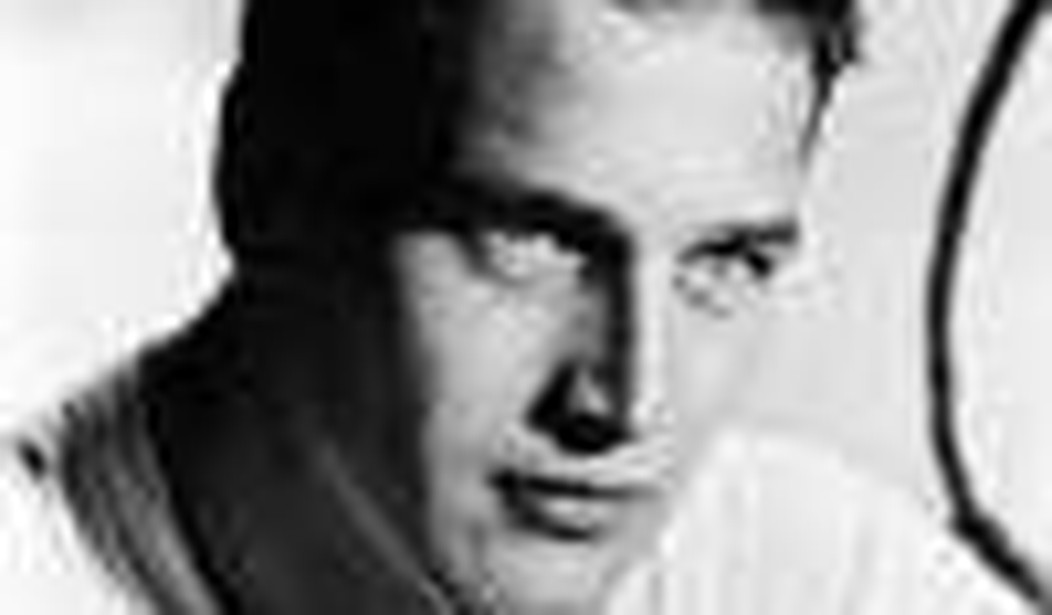Paul Newman, legendary actor, businessman, and race car driver died at his farmhouse near Westport, Connecticut, after a long battle with cancer.
Even for a movie star he was uncommonly handsome and charismatic. And yet, somehow, Paul Newman defied the odds. He was a good man.
Born in 1925 in Shaker Heights, Ohio, Newman was the son of a Catholic mother and Jewish father who ran a successful sporting goods operation. Splitting the difference with dad, Newman always described himself as a Jew but credited the idea of a life in sporting goods for his interest in acting. After his discharge from the Navy in 1946, he studied drama at Yale before making his way to the famed Actors’ Studio in New York where he was trained in the vaunted method style of acting by the legendary Lee Strasberg.
Talented and good looking, Newman quickly found work in television and then on Broadway in the original production of Picnic. Hollywood soon came calling and against his better judgment he accepted the lead in The Silver Chalice (1954), an embarrassing costume drama that failed miserably and nearly killed Newman’s film career in the crib. So ashamed, ever after Newman would make fun of his performance, going so far as to take out an ad in the trades apologizing to viewers who might have caught its television broadcast.
A second chance arrived with Somebody Up There Likes Me (1956). The film made money, the critics praised his portrayal of boxer Rocky Graziano, and for the next fifteen years Newman would fine-tune his screen personality in a series of roles requiring Brando’s supernatural ability to brood but in a more accessible persona. And brood he did.
In 1958 alone, Newman would portray Billy The Kid as a noble psycho in Arthur Penn’s under-appreciated The Left-Handed Gun; an alcoholic ex-jock, sexually frustrating his wife (Elizabeth Taylor) in Cat on A Hot Tin Roof; and a relentless opportunist in all things love and commerce in The Long Hot Summer.
This was Newman’s early specialty: playing loners who disguised themselves as reprobates in order to hide both their loneliness and that they might give a damn about anything. By the time the audience was introduced to these characters, a harsh world had already forced them into a protective shell of selfish indifference and insolence. The pleasure, of course, was in the watching and waiting for redemption.
No film better illustrates this than The Long Hot Summer, which introduces Newman’s character Ben Quick surrounded by angry townspeople accusing him of being a barn burner. We don’t need the last reel to tell us Quick is innocent. It’s there in Newman’s performance: the insolent grin, the blue-eyed twinkle, but behind it, the pain of being falsely accused. Throughout the rest of the picture this gives Quick’s swagger meaning and depth. It also allows us to sit back and vicariously enjoy Quick’s id for the next 100 minutes until his love for Clara (Joanne Woodward) creates a safe enough environment for the young man’s innate decency to reemerge.
Throughout most of the 1960s, Newman would become a bankable star playing variations on this role, most notably in The Hustler (1961) and Sweet Bird of Youth (1962).
Like most leading men, Newman wasn’t a versatile actor. His genius wasn’t his range, it was the limitless depths he could achieve within his range — the emotional places he could plumb. In 1963 Newman would take his well-honed persona to an entirely new level with Hud, where this time, the twinkle in the eye really is all hustle. Newman is so good it doesn’t matter how many times you see the film, you keep hoping it will end differently. Just like the young Brandon de Wilde character, until that very last moment you’re sure Hud Bannon will accept his redemption in the promise of Patricia Neal and fulfill your hero worship. But he never does. He always chooses that lonely, barren, dusty dirt farm.
In 1967 Newman was 42 and a three-time Oscar nominee. He was certainly a solid, well respected leading man, but his status as an icon was about to be forever cemented by taking his persona over one final hill — to a cynical yet inspiring place that matched the times. By hook or crook whether it was picking a fight with a giant George Kennedy or eating 50 hard-boiled eggs in an hour, Cool Hand Luke is ultimately about a lost soul; an individualist who can’t find his Clara or place, yet determined (and finally successful) in killing himself.
Whether by accident or design, a subtle but important change in Newman’s acting style developed between Cool Hand Luke and Butch Cassidy and the Sundance Kid (1969); he relaxed. The method approach gave way to a charming middle-aged ease allowing Newman to be one of the only actors from the 1950s able to transfer his popularity into the 70s and 80s.
For the next twenty-five years, Newman cemented his staying power by wisely playing his age. Even when seducing the much younger Sally Field in Absence of Malice (1981) or Rachel Ticotin in Fort Apache, The Bronx (1981), Newman played the older man always using it to his advantage. He’s especially marvelous as the profane, over-the hill hockey player in Slap Shot.
Newman would finally win a well-deserved Oscar at the age of sixty for The Color Of Money (1986), a sequel to The Hustler that finds Fast Eddie Felson still hustling and Newman with enough star power to steal the movie from Tom Cruise. Though he didn’t win, Newman would give Oscar-worthy performances in both Nobody’s Fool (1994), one of the best films of the nineties, and The Verdict (1982), which, in my opinion, ranks as one of the finest performances ever captured on film.
But for all his legendary screen performances and awards, nothing was more impressive than Paul Newman the man. Before it became chic, when it could hurt a star’s career, Newman was out there in the early 1960s with Charlton Heston, Marlon Brando, and Rev. Martin Luther King marching for civil rights. A lifelong liberal, Newman, unlike too many of today’s stars, didn‘t trash the other side. Instead, he was a proponent, an advocate, and — more importantly — one who put his money where his mouth was.
Using his passion for cooking, in 1982 Newman created “Newman’s Own,” a wildly successful venture that, from sales of salad dressings, pasta sauce, and other food items, has reportedly netted upwards of $200 million for charity. As if that didn’t keep him busy enough, in 1988 Newman opened The Hole In The Wall Camp (named after Butch Cassidy’s “gang”) for seriously ill children.
The most legendary thing about Newman, however, was his marriage of fifty years to Joanne Woodward, an Academy Award winning actress in her own right. Once asked how he managed to stay faithful, Newman replied, “Why go out for hamburger, when you got steak at home.” It says a lot about man who talks about his wife in such ways. It also says a lot that of the five times Newman stepped behind the camera as a feature director, three of them involved plum roles for his wife.
Newman’s legacy will always be there for new generations to discover in revival houses and on DVD. His charitable legacy will also live on. Unfortunately, what is lost forever is the kind of movie star Paul Newman was — the kind who understood that being larger than life meant never crossing the line into the dark heart of celebrity; that it was possible to be politically active without insulting your fans; that living in rural Connecticut as opposed to Beverly Hills was how to keep your perspective.
A loving father, faithful husband, World War II veteran and philanthropist who gave away a vast fortune, being one of the all-time great screen legends was only part of who Paul Newman was. It‘s the rare circumstance where after their passing we mourn the loss of the man more than the star.
Paul Newman was 83.









Join the conversation as a VIP Member